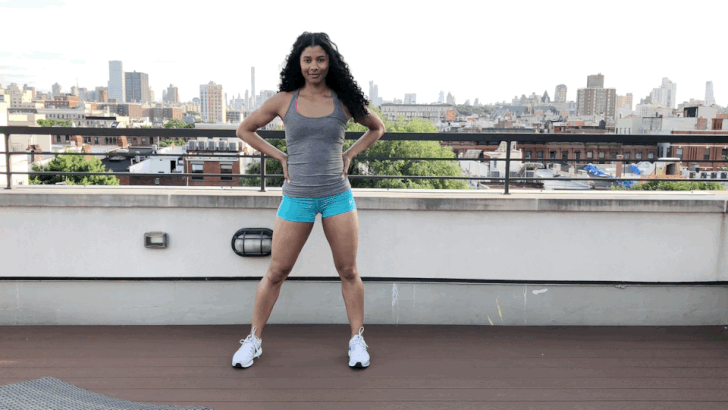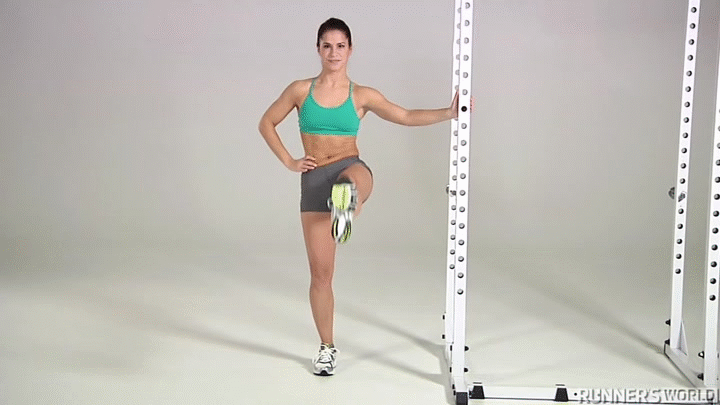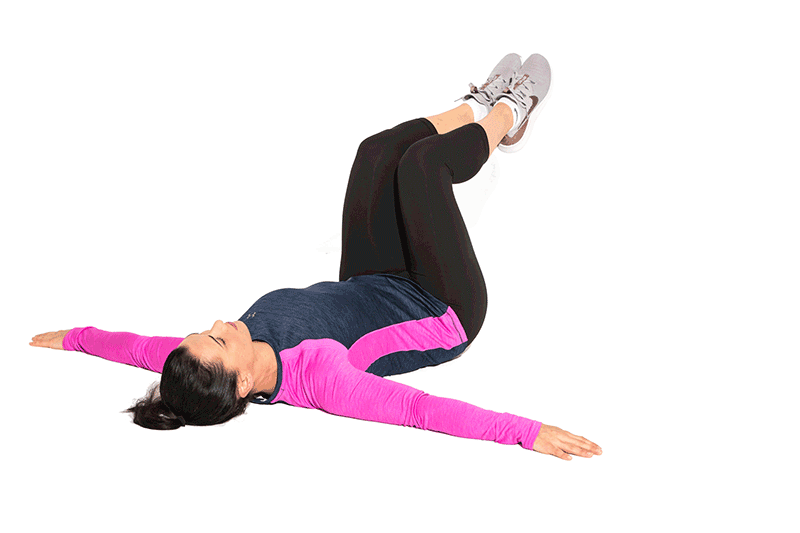Mobility is a fundamental concept in the realm of physical fitness and over all health. It is the body’s ability to move freely and seamlessly through a complete range of motion at various joints and muscles.
Unlike mere flexibility, which focuses on the elongation of muscles, mobility focuses on both flexibility and stability. This necessary combination ensures that joints and muscles are able to perform movements efficiently, comfortably and without any limitations or discomfort.
The concept of mobility extends beyond the limits of exercise. Mobility is an integral part of daily life. From reaching for an item on a high shelf to bending down to tie your shoelaces, every movement you make involves mobility. A well-mobilized body means that you can engage in these activities effortlessly and without strain.

What are the Benefits of Practising Mobility
- Injury Prevention:
Improved mobility helps to maintain the agility of joints and muscles which reduces the risk of strains, tears and other injuries during physical activities or daily tasks.
- Enhanced Range of Motion:
Good mobility enables joints to move through their full range of motion. It promotes, flexibility and prevent stiffness, which can hinder movement.
- Better Posture and Alignment:
Working on mobility can correct imbalances in muscle groups, leading to a better posture and alignment. This not only improves appearance but also reduces the strain on certain areas of the body.
- Increased Performance:
Athletes and fitness enthusiasts also benefit from increased mobility as it allows them for more efficient and effective movements, leading to better performance in sports and exercise routines.
- Quality of Life:
With improved mobility, you can engage in everyday activities more comfortably and effortlessly, enhancing your overall quality of life and promoting independence as you age.
10 Essential Tips for Improving Mobility
1. Prioritize Dynamic Warm-Ups – Begin your exercise routine with dynamic warm-up exercises that target different muscle groups. These movements increase blood flow, lubricate joints and prepare your body for the demands of physical activity.
2. Incorporate Regular Stretching – Stretching is crucial for maintaining flexibility and improving joint range of motion. Include both static stretches (holding a position) and dynamic stretches (controlled movements) in your routine.
3. Engage in Foam Rolling – Foam rolling, also known as self-myofascial release, helps release tension and knots in muscles, promoting better circulation and mobility. Spend time targeting specific areas to alleviate tightness.
4. Focus on Mobility Exercises – Dedicate time to exercises that specifically enhance mobility. Movements like leg swings, hip circles and shoulder rotations can target specific joints and improve their range of motion.
5. Practicing Yoga or Pilates – Yoga and Pilates are excellent practices that emphasize flexibility, balance and body awareness. These disciplines can help you develop a strong core, improve posture and increase overall mobility.

6. Strengthen Your Stabilizing Muscles – Weak stabilizing muscles can contribute to restricted mobility. Incorporate exercises that target these muscles, such as planks, bird-dogs, and glute bridges.
7. Mind Your Posture – Maintaining good posture is essential for preserving joint health and mobility. Be conscious of your posture throughout the day, whether you are sitting at a desk or standing in line.
8. Stay Hydrated – Hydration is crucial for maintaining the suppleness of connective tissues and preventing stiffness. Drink an adequate amount of water daily to support joint health.
9. Get Enough Sleep – Quality sleep is when your body repairs and rejuvenates itself. Aim for 7-9 hours of sleep each night to ensure your muscles and joints remain in optimal condition.
10. Listen to Your Body – Pay attention to any discomfort or pain during exercises. Pushing through pain can lead to injury and decreased mobility. Always prioritize safety and seek professional guidance if needed.
10 Essential Exercises to improve Mobility
1) Hip Circles: Stand with your hands on your hips and rotate them in a circular motion, gradually increasing the size of the circles. This exercise helps improve hip flexibility.

Benefits – Hip circle exercises enhance hip flexibility, loosen tight muscles and improve range of motion. They can alleviate lower back discomfort and contribute to better overall mobility and posture.
2) Arm Swings: Stand with your feet shoulder-width apart and swing your arms forward and backward in a controlled manner. This exercise enhances shoulder mobility.

Benefits – Arm swings increase shoulder mobility and flexibility, promoting better joint health. They also enhance blood circulation, release tension and contribute to improved upper body posture and movement.
3) Cat-Cow Stretch: Start on your hands and knees. Arch your back up like a cat, and then drop it down while lifting your head like a cow. This stretches and mobilizes your spine.

Benefits – The cat-cow stretch is a gentle spinal flexion exercise that helps improve flexibility and mobility in the spine. It also stretches and strengthens the core muscles and relieves back pain.
4) Leg Swings: Stand next to a wall for support and swing one leg forward and backward like a pendulum. This exercise improves hip flexibility and stability.

Benefits – Leg swings enhance lower body flexibility and range of motion. They effectively warm up muscles, increase hip mobility and improve balance, making them great for pre-workout routines and injury prevention.
5) Ankle Circles: Sit on the floor with your legs extended. Lift one leg and rotate your ankle in circles, both clockwise and counterclockwise. This helps improve ankle mobility.

Benefits – Ankle circles help improve ankle flexibility and joint mobility. They enhance circulation, reduce stiffness and can be beneficial for athletes. It is beneficial for those with sedentary lifestyles and also for those recovering from ankle injuries.
6) Thoracic Rotation: Lie on your side with your knees bent and arms outstretched. Rotate your upper body while keeping your hips stable. This enhances rotation in your mid-back.

Benefits – Thoracic rotation exercises enhance spinal flexibility, alleviate back pain and improve posture. They also engage core muscles, promoting overall stability and mobility in the upper body.
7) Child’s Pose: Kneel on the floor, sit back on your heels, and reach your arms forward. This stretches your back and shoulders, promoting flexibility.

Benefits – Child’s pose mobility exercise stretches and relaxes the lower back, hips, thighs and ankles. It promotes spine flexibility, relieves tension and fosters a sense of relaxation and calmness.
8) Seated Leg Lifts: Sit on the floor with your legs extended. Lift one leg off the ground, keeping it straight, and hold for a few seconds. This exercise improves hamstring flexibility.

Benefits – Seated leg lifts helps to improve hip flexibility and strengthen the core, lower back and leg muscles. It enhances posture, aids in balance and supports overall lower body mobility.
9) Trunk Rotations: Sit on the floor with your legs crossed. Place one hand on the opposite knee and gently twist your upper body, looking over your shoulder. This stretches and mobilizes your spine.

Benefits – Trunk rotation stretches the spine, improves flexibility of the torso and enhances rotational movement of the waist. It helps in relieving lower back tension and supports better posture.
10) Neck Tilts and Rotations: Gently tilt your head to one side, bringing your ear toward your shoulder. Then, rotate your head to the left and right. This helps release tension in your neck and improves neck mobility.

Benefits – Neck tilts and rotations release tension in the neck, improve neck flexibility and alleviate stiffness. These exercises also enhance blood circulation to the neck muscles promoting relaxation.
The Bottom Line
Remember, everyone’s body is different so consult a healthcare professional or fitness expert before starting a new mobility routine especially if you have any pre-existing health conditions or injuries. By focusing on these 10 essential tips you’ll be well on your way to moving with greater freedom and agility.
Leave a Reply